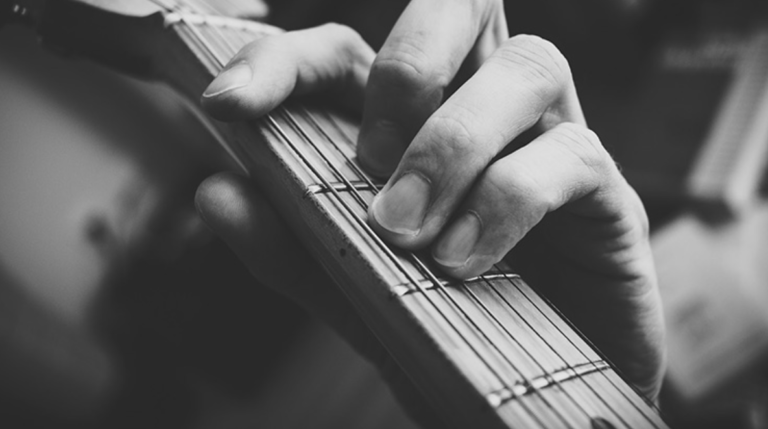Last Updated on September 20, 2022 by IDS Team
How do you find the perfect guitar tone? Some say guitar tone is in the fingers. Some say the producer creates a lot of it and some say it’s all about having the right gear. In truth, there is no right or wrong way to achieve tone. What matters is you achieve the tone which is right for your own creative purposes. There might be many ways to do this. You might use multiple ways before you are satisfied with the result. However, this article will show you how to use sound design and plugins to find that perfect tone. It’s a process – even if you start off with something less than perfect.
Guitar Pedal Plugins: An Easy Way to Achieve the Perfect Tone
Most guitarists rightly spend plenty of time focussing on their mastery and command of their instruments. However, to find the perfect guitar tone, it is important to remember that sound design allows us opportunities beyond our analogue gear. You can reach tone beyond your average by using those guitar pedal plugins which come with every DAW. Don’t just experiment with them or use them in the context of a guitar solo. Try deep-diving and really getting to grips with them. This means using them slowly and using them subtly. You can also add them in the background to add tone as opposed to making them the central focus.

In addition, try turning your attention to lesser-used plugins such as soft saturation and multi-FX. You can repurpose pedals such as wah by applying them down low on a single half of a double-tracked riff. This can alter the perception of tone on both tracks. Using pedals as the building blocks of tone as opposed to the focal point can be game-changing. In this way, they can really make you think about how your guitar playing relates to sound design.
Basic FX: Reverb and Delay to Find the Perfect Guitar Tone
Reverb and delay are some of the most basic FX. These apply to either whole tracks or the guitar on its own. Tone doesn’t exist independently of these FX. However, they’re not the kind you can use in order to create tone itself. Instead, they are the kinds of FX which would alter your tone – or at least its perception.
So, how do you take reverb and delay into account when designing your tone? Every good mix has them. For starters, you could use them to emphasise the bits of your tone you want to stand out. You can add reverb to guitar bass notes, or subtle delay on the top end of a riff. This can affect timbre subtly and bring crystal clear highs and rich lows.
If you want to see some reverb products at fair prices, check out pluginboutique.com by clicking here. If you buy something, you really really support us because we get a small kickback. There is really no guitar-specific reverb, all product have their own little vibe and quirk, plus most of them have endless setting possibilities.
Also bear in mind too many FX can smother your tone. Reverb and delay make everything sound better, but often this is only superficial. The best thing is to make sure your guitar sounds great in the first place.
Below you will find the best guide for beginners, it is a long one, but it is comprehensive.
Bringing out the Best in Your Tone: Working With What You’ve Got Already
Ultimately two separate things make up tone. These are the way the musician plays, and then any additions to the timbre. These timbral additions can come from equipment and sound design. As a result, if you don’t know what you’re working with, it might be difficult to get that perfect match. Understanding tone as something you can achieve in multiple ways can help a lot.
The first step is to realise that too many cooks spoil the broth. Often with adding FX for tone, less is more. So how do you know what you need to add? The first step is to identify what you dislike. This could indicate what your natural tone, for whatever reason, is lacking. Does it sound too thin? Maybe you can use sound design to increase the bass frequencies. Does it sound too tinny? There may be some sound in the top end which you can take out with EQ. Changing your tone like this can make you look at the entire finished track in a totally different light. Do you feel like it’s lacking a certain grit, especially if you’re creating a blues or hard rock track?
If you’re recording in a full studio with mic-ed up amps, you might lose some of that perfect sound. This can happen simply due to the space’s natural acoustics. This is where sound design becomes an invaluable tool so that you can easily add in those bits you’ve lost. Overall, starting with a criticial ear allows you the freedom to use sound design as an addition to your natural tone.
How to Tie Everything Together: Tone in the Context of a Finished Track
It’s one thing to know what tone you’re starting with. However, if you really want to find the perfect guitar tone, you may have to modify things within the sound design process. Overall, keeping your tone in line with the rest of a track is something totally different. This is where the mixing and mastering process comes into its own and it really helps to know your gear. Having a good ear for what a mix needs is a huge part of this. If ear training, in general, is something you struggle with, you can check out our article this month. This breaks down the best ear training software on the market as well.
Looking Deeper to Find the Perfect Guitar Tone
You might have the best tone in the world. However, if it’s too overpowering, it won’t sound good within the track. The most important takeaway here is to know separate how your tone sounds when isolated. This helps you balance it with how it sounds within a track.
However, it’s important to distinguish what is and what isn’t what is a tonal issue. Something might be an issue on the master bus or one which requires you to alter a different instrument altogether. You can do this by isolating your track. The best thing is to strike a balance. Your tone should sound great on its own, but also not overpower any other instruments.
Looking to find more ways to improve your skills? Check out the rest of our tutorials over at https://www.idesignsound.com/tutorials/
Final Thoughts
Tone is an elusive quality and it is hard to pinpoint where exactly it comes from. However, finding the perfect guitar tone is not the mysterious alchemy people often make it out to be. Sound design is as much a part of tone as the initial guitar recording. For guitarists, it is crucial not to overlook what you can do in the sound design process. This will ensure your instrument sounds fantastic both on record and live.



